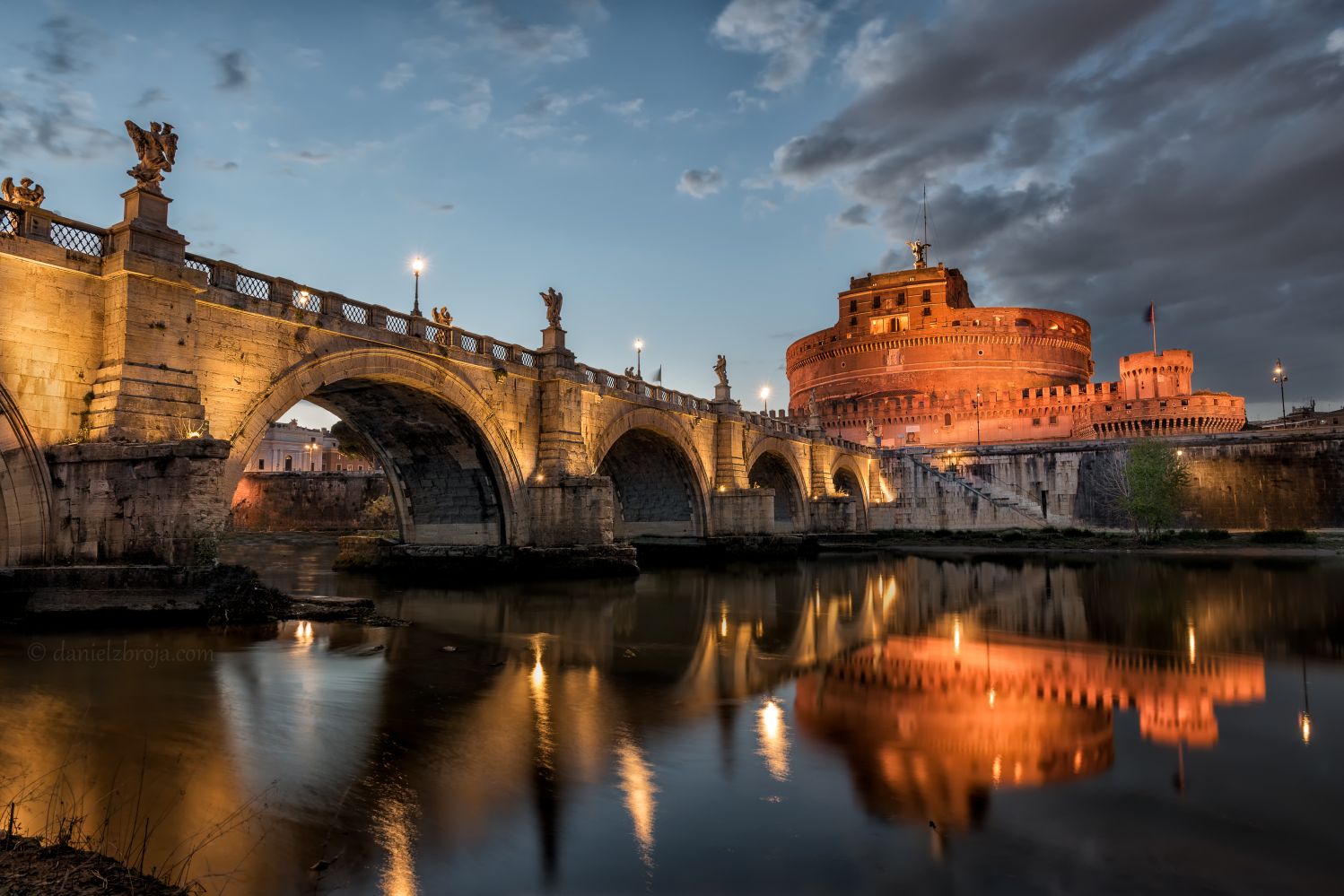
Mausoleum of Hadrian
Rome, Italy
Usually known as Castel Sant’Angelo. It was initially commissioned by the Roman Emperor Hadrian as a mausoleum for himself and his family. Construction of the mausoleum started in 123 AD and finished in 139 AD. At the time which the Castel Sant’Angelo was constructed, it was the tallest building in Rome. The mausoleum was connected to the city at the other side of the river by a newly constructed bridge, the Pons Aelius (Ponte Sant’Angelo) and its many statues were added later during the Baroque period. The building was converted to a military fortress in 401. Legend holds that the Archangel Michael appeared atop the mausoleum, sheathing his sword as a sign of the end of the plague of 590, thus lending the castle its present name. The popes converted the structure into a castle, beginning in the 14th century. Throughout the Middle Ages, the castel was a refuge for the popes in times of danger. A brick superstructure was added to the cylindrical building in several phases to house the magnificent papal apartments. Castel Sant’Angelo features many beautiful rooms decorated with frescoes and also houses a prison and a torture chamber. Executions were performed in the small inner courtyard. At the top of the Castel Sant’Angelo, the Archangel Michael stands mighty and proud, sheathing his sword. The bronze statue was created by the Flemish sculptor Pieter Van Verschaffelt in 1798. From the end of 11th century, the Angel at the top of castle was substituted 6 times. The military use of Castel Sant’Angelo ended in 1901. Now it is a national museum under Italy.